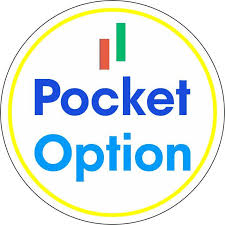
In the world of online trading, understanding the intricacies of fees can make or break a trader’s success. One platform that has garnered attention is Pocket Option. As traders flock to this platform for its user-friendly interface and diverse trading options, it’s crucial to grasp the associated fees to enhance your trading experience. For comprehensive insights on the fees charged by this platform, please visit Fees Pocket Option https://pocketoption-exchange.com/fees/.
What is Pocket Option?
Pocket Option is an online trading platform that allows users to trade various financial instruments, including cryptocurrencies, stocks, forex, and commodities. Established in 2017, the platform has quickly gained popularity due to its innovative features, such as social trading, a demo account, and competitive payout rates. However, as with any trading platform, understanding the fees involved is essential for effective trading.
The Importance of Fee Structure
Before diving into the specifics, it’s vital to understand why fee structure matters. Trading fees can significantly affect your potential profit, especially if you are a frequent trader. From spreads to withdrawal charges, every little cost adds up. Therefore, knowing what to expect can help you devise a more effective trading strategy.
Types of Fees on Pocket Option
At Pocket Option, several types of fees may apply, depending on your trading activity. Understanding each type can help you navigate your trading journey more effectively. Here’s a breakdown:
1. Deposit Fees
Generally, Pocket Option does not charge any fees for deposits. This is a significant advantage, as many platforms impose fees for adding funds. Users can deposit money using various payment methods, including credit cards, e-wallets, and cryptocurrencies, without incurring extra charges.
2. Withdrawal Fees
Withdrawal fees can vary based on the method you choose. While some payment methods may have lower fees, others could incur higher charges. It’s important to check and compare the withdrawal fees for different methods on Pocket Option to ensure you’re making the most cost-effective choice.
3. Trading Fees

Pocket Option operates primarily on a spread-based system. This means that the broker’s profit comes from the difference between the buying and selling prices of assets. While there may not be explicit trading fees, the spread can affect your overall profit margin, especially in volatile markets.
4. Inactivity Fees
If you do not trade for a certain period, Pocket Option may impose an inactivity fee. This is common across various trading platforms and usually kicks in after several months of no trading activity. To avoid this fee, it’s wise to engage in trades or make small transactions periodically.
5. Overnight Fees
Traders who hold positions overnight may incur swap or rollover fees. This fee is relevant for traders who prefer to engage in swing trading or prefer holding onto their positions for an extended period. Check the details of these fees on the platform, as they can vary based on the asset being traded.
How Fees Impact Trading Strategies
Understanding fees can greatly influence your trading strategy. Here are a few ways fees can affect your trading decisions:
- Position Sizing: High fees may lead you to take smaller positions to minimize costs, affecting your potential returns.
- Frequency of Trades: If a platform has high withdrawal or trading fees, you might opt for fewer trades, altering your trading frequency and strategy.
- Asset Selection: You may choose less volatile assets with tighter spreads to minimize trading costs and risks associated with high fees.
Tips for Managing Fees on Pocket Option
Managing fees efficiently can enhance your trading experience. Here are some tips to help you minimize costs on Pocket Option:
- Choose the Right Payment Method: Research the different payment methods available on Pocket Option. Each method has varying fees, and selecting the most economical one can help save money.
- Keep Active: Regularly engage in trading activities to avoid inactivity fees. Even small trades can help maintain an active account status.
- Consider Your Strategy: Opt for a trading strategy that accounts for fees. If trading frequently, ensure your selected asset has a minimal spread to maximize profitability.
Conclusion
While Pocket Option offers a range of features and tools for traders, understanding its fee structure is vital. Whether you’re a novice or an experienced trader, being aware of deposit, withdrawal, trading, inactivity, and overnight fees can make a significant difference in your trading performance. By being strategic about your trading habits and choices, you can mitigate the impact of fees, ultimately leading to a more successful trading journey on Pocket Option.